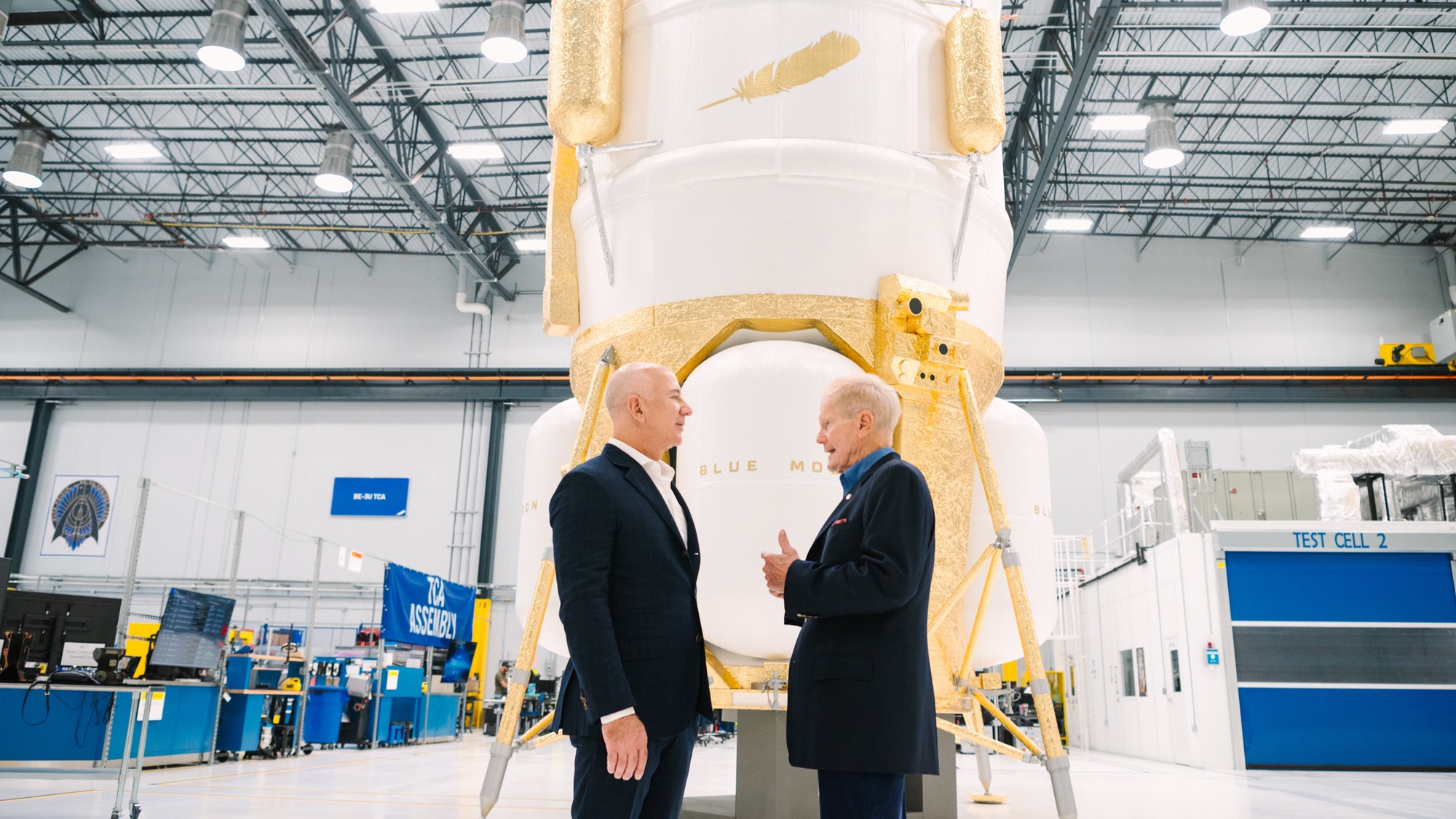Blue Origin Unveils Blue Moon Lunar Lander Mockup for NASA’s Artemis Program
Blue Origin has revealed a full-sized mockup of an uncrewed version of its Blue Moon lunar lander, aimed at testing technologies for the crewed version being developed for NASA’s Artemis program. The company showcased images of the Blue Moon Mark 1 mockup at its engine manufacturing facility in Huntsville, Alabama. This lander is designed to transport three tons of cargo to the lunar surface.
The first flight of the Blue Moon Mark 1, known as the “Pathfinder Mission” (MK1-SN001), will validate critical systems such as the BE-7 engine, cryogenic fluid power and propulsion systems, avionics, continuous downlink communications, and precision landing, according to the company’s website.
Future Blue Moon Mark 1 landers, starting with MK-SN002, will be available to carry customer payloads. Blue Origin is one of 14 companies participating in NASA’s Commercial Lunar Payload Services program for uncrewed lunar landings. However, the company did not reveal any launch dates for the Pathfinder Mission or future Blue Moon Mark 1 missions.
During an AIAA’s ASCEND conference panel discussion, Ben Cichy, Senior Director of Engineering of Lunar Permanence at Blue Origin, mentioned that two Mark 1 lunar pathfinder landers will fly on early flights of the New Glenn rocket. He did not provide specific dates for these launches.
John Couluris, Senior Vice President of Lunar Transportation at Blue Origin, stated that the Mark 1 lander is part of a series that includes the Mark 2 lander for crewed landings. NASA selected the Mark 2 lander, along with SpaceX’s Starship, as part of its Human Landing System (HLS) program. He also highlighted that NASA requires the lander to land within 100 meters of a designated location. Blue Origin is developing a terrain relative navigation system using lidar, which has been tested on New Shepard suborbital flights and will be further tested on Mark 1 landings to achieve landing precision within single-digit meters.
Blue Origin’s announcement coincided with a social media post by NASA Administrator Bill Nelson, displaying images of Nelson along with Blue Origin founder Jeff Bezos at the Blue Moon mockup. Nelson commented that Blue Moon will ensure a regular presence of astronauts on the Moon before embarking on Mars missions. The visit of Nelson and Bezos to the facility was not disclosed, but Nelson was in Huntsville on the same day to speak at the von Braun Symposium.
Starship Progress
The crewed version of the Blue Moon lander is planned for use in the Artemis 5 mission, tentatively scheduled for the late 2020s. However, the Artemis 3 and 4 landings will utilize SpaceX’s Starship.
Speaking at the von Braun Symposium, Benji Reed, Senior Director of Human Spaceflight Programs at SpaceX, emphasized that the development of the Starship lander focuses on guidance, navigation, and control technologies required for lunar landings, along with thermal control and power generation systems. He mentioned that SpaceX benefits from valuable experience gained from other programs like Dragon missions to the International Space Station.
However, the integrated Starship/Super Heavy vehicle has faced challenges in achieving flight readiness. Delays in this effort have raised concerns among NASA officials regarding the overall development of the Starship lunar lander and its impact on the Artemis 3 mission, currently scheduled for a late 2025 launch.
In August, Jim Free, NASA Associate Administrator for Exploration Systems Development, suggested that NASA might consider alternative missions for Artemis 3 if significant delays occur with Starship. Free mentioned that NASA had received an updated schedule of Starship development from SpaceX, but required time to review it. Speaking at the von Braun Symposium, Free did not disclose any details about the schedule’s impact on Artemis 3 but expressed satisfaction with the progress demonstrated by SpaceX. He emphasized the need for the successful orbital flight test (OFT 2) of Starship/Super Heavy as a key milestone for the Artemis program.
Free also stated that Artemis 3 should not be solely focused on Starship, as work is also necessary for the Orion spacecraft, the Space Launch System, and spacesuits being developed by Axiom Space. “We have to figure out how that fits into the rest of the enterprise to get to that mission date,” he added, referring to the alignment of SpaceX’s Starship schedule within NASA’s overall plan.


